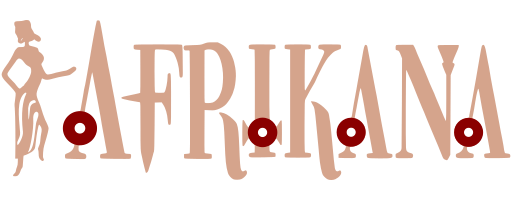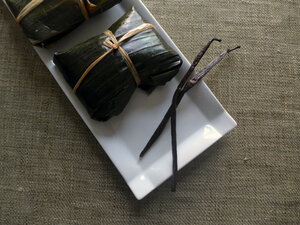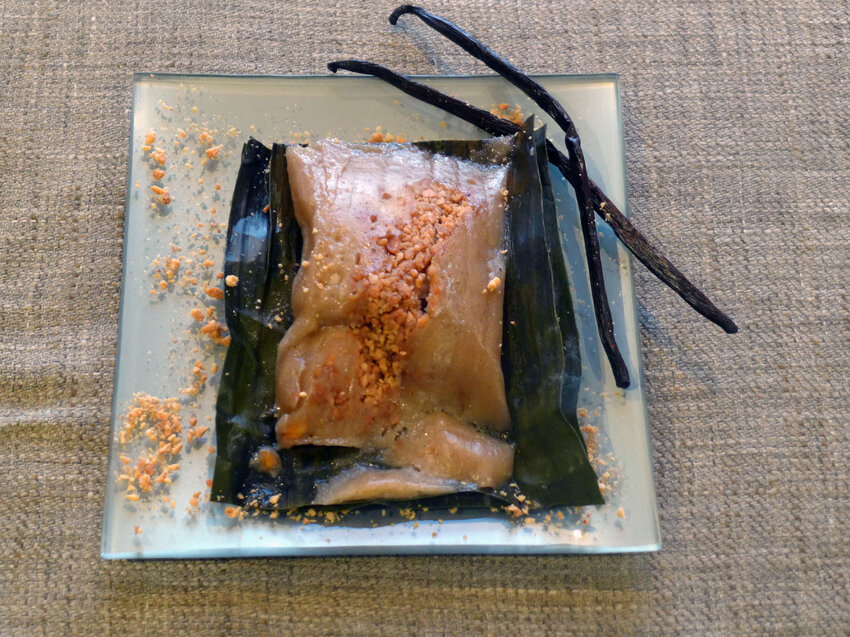It comes directly from Madagascar, the fourth largest island in the world, with unique flora and fauna.
Pronounced koub 'rav'n (from "koba", dough and "ravina" leaf; literally "leaf dough"), this sweet snack, also called kobandravina, moforavina, or koba akondro, is extremely popular and is prepared all over the " Big island" (Madagascar's nickname).
Koba ravina is consumed daily by the vast majority of Malagasy people, mostly in the late afternoon as a snack, by students after returning from school, but also by officials and farmers. In Madagascar, you can buy it as a snack at railway stations and freight stations, folded into banana leaves. The sausages flavored with vanilla, a real natural resource of Madagascar, are prepared by street vendors who carry them on their heads in a basket that keeps them always hot. They roam the streets shouting “Koba… Koba… vao mafana!” (“Koba… Koba… hot”). The cry that all Malagasy eagerly await every day. This koba ravina is an easy dessert to prepare. The sweet taste of banana and vanilla, sticky rice, brown sugar and the texture of crushed peanuts provide a surprising and quite unique result, wrapped in banana leaves and briefly steamed.
Do you know how real vanilla is grown, which gives "koba" its unique taste ?
After saffron, vanilla is the second most expensive spice in the world. It is the fruit of the Vanilla planifolia orchid, whose largest plantations are in Madagascar. Its shape resembles bean pods, which are harvested half-ripe, then dried and fermented. The whole complex process, during which tiny needle-like crystals of aromatic vanillin are formed on their surface, takes about six months.
Fragrant vanilla is an epiphytic creeper native to Mexico. It has roots in the soil and climbs tree trunks, often up to a height of ten meters. The stem is rigid, cylindrical, with elbows from which aerial roots grow. With them, the plant receives atmospheric moisture and clings to the support. The alternate oblong leaves are fleshy, about 15 cm long. The pale yellow 7 cm flowers have a green tinge and develop in many-flowered axillary racemes.
The flowers, which do not smell at all, open only once every few hours, so those grown in culture are artificially pollinated.
The fruit is a 16 to 30 cm long capsule that contains mushy, strongly aromatic pulp with thousands of tiny seeds. When ripe, the capsule splits into two parts. The first fruits appear in the third to fourth year of growth. They are harvested before ripening, when their color changes from green to yellow. They acquire their characteristic black color and pleasant aroma only through fermentation.
Vanilla needs a warm, humid climate and humus soil. It does not tolerate direct sun, so it is shaded on farms. It is often grown on fruit trees or cocoa trees. Its cultivation is very expensive and laborious not only because the flowers have to be artificially fertilized (a skilled farmer pollinates up to two thousand flowers a day), but also because of additional irrigation. They water it for ten months of the year, then they limit the watering, as a result of which it starts to bloom. Even during the ripening of the pods, watering is limited.
Many products smell and taste like vanilla, but few actually contain it.
Natural vanillin often replaces the artificially produced one, which was discovered in 1874. In the kitchen, however, it pays to invest a little and use real vanilla. The capsules, which are referred to as pods, must be cut lengthwise and cooked together with the ingredients to be scented. The flesh with the seeds is then scraped off and left in the dish.




Commets 0
Add a comment